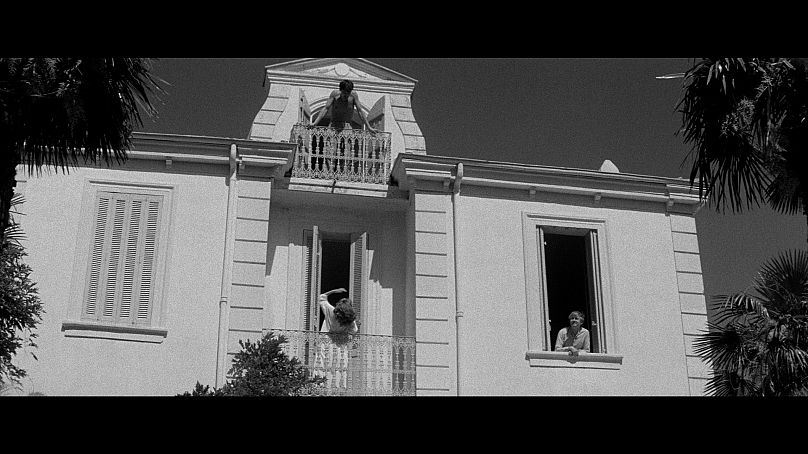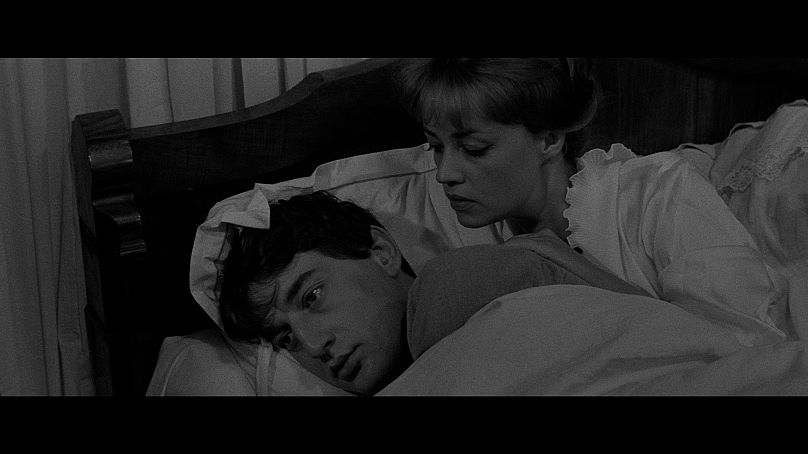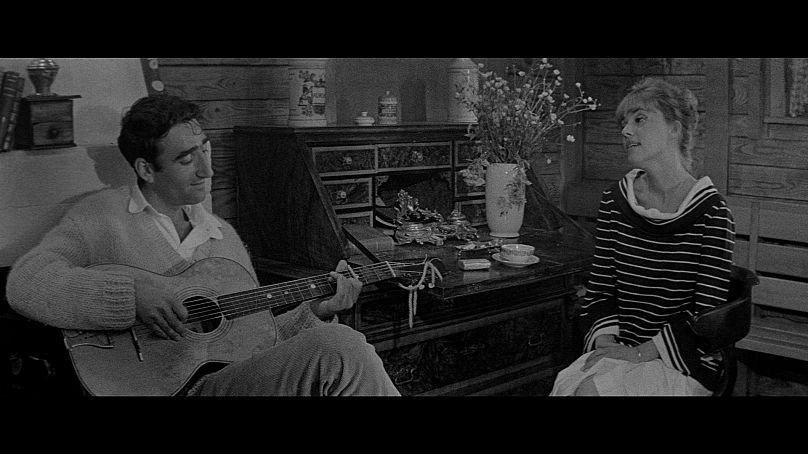Does nostalgia for the ideas of youthful creativity, sexual freedom and societal revolution lurk behind the continued reverence for French New Wave films?
It’s a film so famous that bands, music and even Parisian hotels have been named after it. Even now, as it approaches its 60th anniversary year, Jules et Jim by François Truffaut hit another pop culture moment when Netflix’s fictional Emily in Paris watched it and complained the ending of the movie was tragic.
But does Jules et Jim deserve to be, as the Guardian’s Peter Bradshaw put it, “now regarded as the audacious apotheosis of the French New Wave” of the 1950s and 60s?
Jules et Jim, played by Oskar Werner and Henri Serre, is the story of two friends who fall in love with the same woman, Catherine. Starting around the time of the First World War, and spanning 20 years, the story is about Catherine being romantically involved with both of them (something Lily Collins, playing Emily in Paris calls ‘frustrating.’) Jules and Jim’s friendship is strangely unaffected by this ménage à trois.
Their unusual sexual arrangement helps make this Truffaut’s most famous film even if it may not be technically his best, according to Geoff Andrew, who’s programmed the current François Truffaut film season at the BFI in London.
“The film is about the search for an unrestrained attitude towards love and relationships and while most of us don’t put that into practice, I suppose it’s something people might envy or dream about,” he explains.
“It’s about the era’s attitude to be free in their affections even if one’s partner takes a shine to someone else. Jules and Jim are great friends and even fighting on opposite sides in the Great War doesn’t stop that. The film’s funny and it asks interesting questions about relationships and love and happiness.”
Ironically, the main reason for Jules et Jim’s enduring status is Jeanne Moreau’s performance as Catherine – who isn’t name-checked in the title.
Moreau, who died in 2017 at the age of 89, was already famous for performances in Louis Malle’s films Lift to the Scaffold and the daring The Lovers. Her role as the free-spirited Catherine made her a French icon, and in real life she was equally unpredictable – she later turned down the part of Mrs Robinson in The Graduate.
“Jeanne Moreau personified a certain sort of modern woman at that time, when the film was set, just after the First World War. The film doesn’t feel like a costume drama, it feels alive and that’s part of the pace of the direction, but it’s also partly down to Moreau who was very much a 1960s woman,” Geoff Andrew says.
Nostalgia for the ideas of youthful creativity, sexual freedom and societal revolution that the early 1960s seemed to promise may also lurk behind the continued reverence for the French New Wave films, and Jules et Jim in particular - although Moreau, when asked about the era in a 2001 interview, responded, “Crap! Nostalgia for what? Nostalgia is when you want things to stay the same. I know so many people staying in the same place... that’s a terrible risk. Living is risking.”
The French ‘New Wave’ made films that were often radically different to Hollywood’s – outside of a studio, often without star names, lacking genre, and about ordinary people. Truffaut was one of a handful of French cinema critics and friends who also started directing in the late 1950s, and Jules et Jim was his third film. Jean Luc Godard’s 1960 film Breathless, starring Jean Seberg and Jean-Paul Belmondo, is another iconic film of the time, which was also co-written by Truffaut, and another of their directing group, Claude Chabrol.
The late director Agnes Varda, whose first film, 1955’s La Pointe Courte, is unofficially considered the start of the Wave, recalled her youthful energy, saying “we made that film for no money. But we were young, and at the time, cinema of that kind didn’t exist. This was the 1950s, so we were very original. Nobody else was doing film with no money, with real people. We didn’t even have money for sound, so we shot silent.”
While Italian directors already had their own ‘neorealist’ period ten years previously, Geoff Andrew points out, and other ‘waves’ of filmmaking were going on around the globe, the French New Wave remains the most famous. That may well partly be attributable to the glamour of France herself.
“I think we have a rose-tinted view of France in the 1960s,” he explains. “Paris will always have a certain allure, and it’s nice to go there – even if it’s only in the cinema.”
For contemporaries of Emily in Paris who now want to discover Jules et Jim, they may want to go armed with the knowledge that the movie with a reputation for personifying youthful energy was adapted from a novel by a 75-year-old author, Henri Pierre Roché. And Emily in Paris may have correctly called out its ending. As film critic Geoffrey Macnab puts it:
“Truffaut’s account of a polyamorous relationship is actually a tragedy in disguise. It ends in disappointment, betrayal, madness and death. That, though, isn’t what anyone wants to remember. The film is so enchanting on the surface that generations of cinema-goers have managed to disregard the darkness at its core.”
François Truffaut: For the Love of Films is at BFI London Southbank, on BFI Player and at selected cinemas UK-wide until the end of February. Jules et Jim screens in selected cinemas UK-wide from February 4, 2022.















